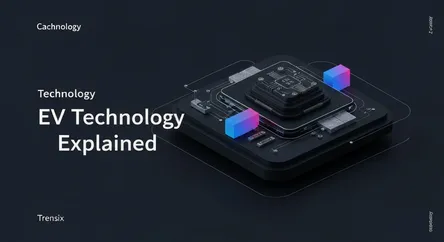Technology
EV Technology Explained

Discover the essentials of Electric Vehicle (EV) technology, from advanced batteries to powerful motors. Learn why EVs are shaping the future of driving.
What is it?
EV technology encompasses the systems that power electric vehicles. Unlike traditional cars with internal combustion engines, EVs use an electric motor powered by a rechargeable battery pack. Key components include the lithium-ion battery, which stores energy; the inverter, which converts DC power from the battery to AC for the motor; and the onboard charger. This ecosystem also relies on external charging infrastructure, from home wall-boxes to rapid public charging stations, which are crucial for making long-distance travel practical and convenient.
Why is it trending?
The surge in EV popularity is driven by several factors. Growing environmental consciousness and government regulations aimed at reducing carbon emissions are primary motivators. Technologically, significant advancements in battery density have increased driving ranges and reduced "range anxiety." Additionally, falling battery costs and government incentives make EVs more financially accessible. Major automakers are heavily investing in electrification, leading to a wider variety of models and improved performance, further accelerating consumer adoption and making EVs a mainstream choice.
How does it affect people?
EV technology is reshaping daily life and the economy. For drivers, it means lower running costs due to cheaper electricity versus gasoline and reduced maintenance needs. On a societal level, it prompts a massive shift in the automotive industry, affecting jobs tied to traditional engine manufacturing while creating new ones in battery production and software development. It also requires a significant build-out of public charging infrastructure, impacting urban planning and energy grids as demand for electricity grows.